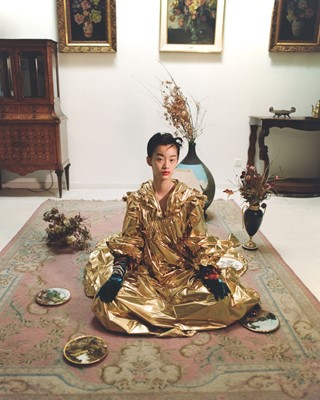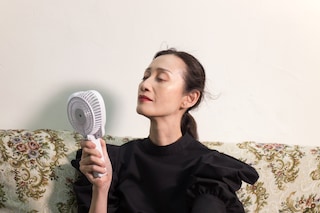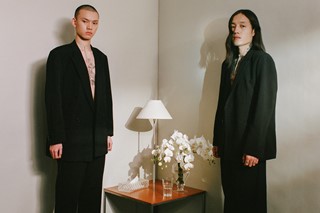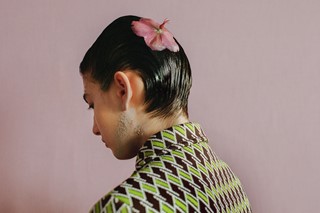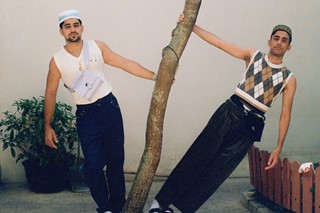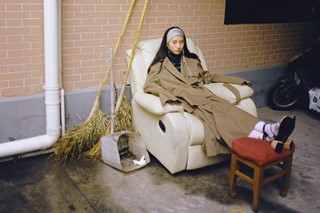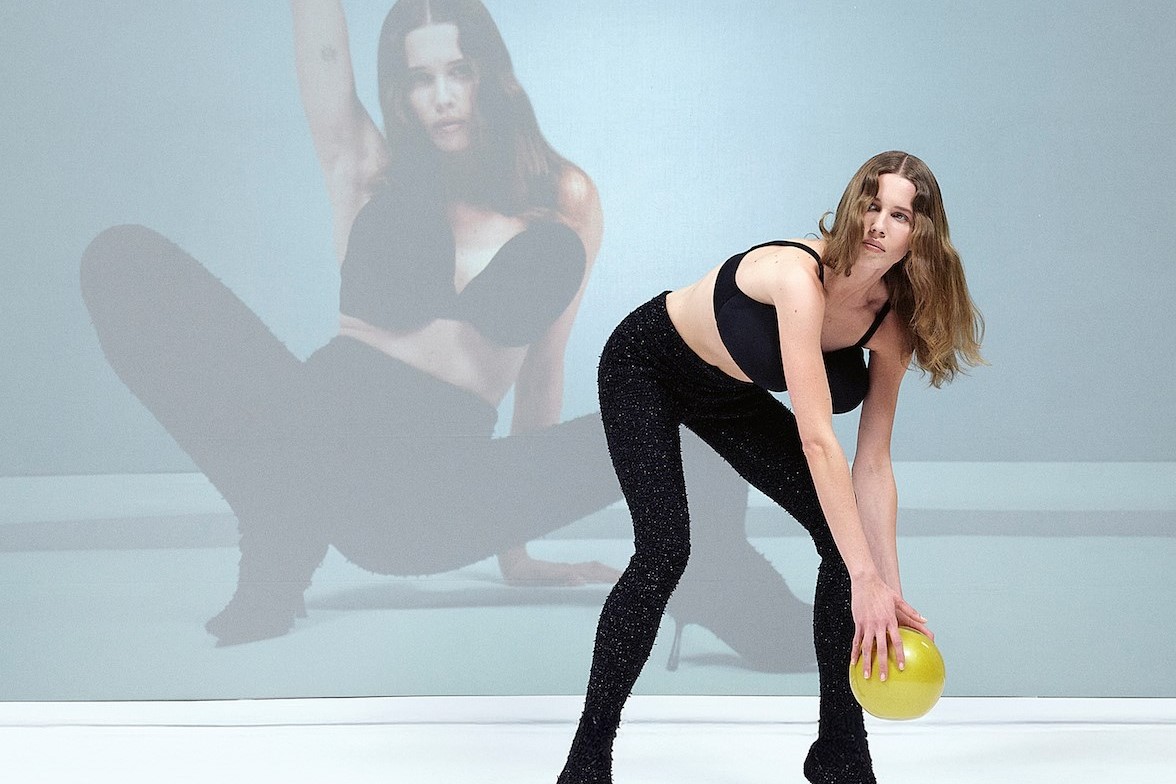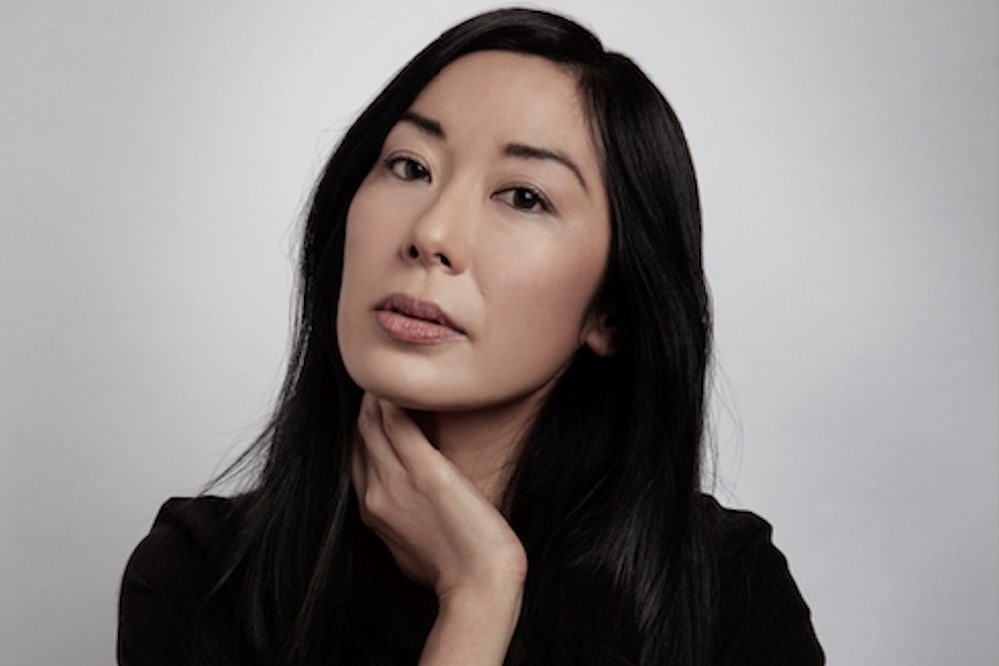When you think Hong Kong, you think of mesmerising neon lights, tall skyscrapers and the gorgeous panoramic view from the top of Victoria Peak. You notice the swift transportation system, luxury malls, fancy bars and the energetic pace of the city. But when you slow down from the bustle and search for a local creative community, you might find it difficult to find, with all the commercial properties taking over the city leaving little space for young artists to cultivate their craft and thrive.
“Hong Kong tends to like foreign cultures more, and it forgets about its own,” says Issac Lam, one of the most sought out and progressive photographers in Hong Kong, known for his raw and saturated imagery. “It’s natural because of our colonial history and education, which encourages us to look outward. But it’s also important to look inward as well to find what makes us special.” A common criticism of Hong Kong’s creative scene is a lack of one – or, more specifically, a lack of homegrown individuals and communities that truly deserve recognition and support. Lam takes issue with that sentiment. “I think Hongkongers believe that because they are desensitised to the city and take it for granted, which is the issue.” Lam is part of a new group of emerging creatives and artists embracing HK culture and reinterpreting it in a new and more inclusive way. “You’ll see a different spectrum of genders, ages and ethnicities in my work and I hope I can achieve an aesthetic that truly belongs to Hong Kong,” says Lam. “Recently, I’ve been really into Chinese opera and the deeper meaning that goes into it and how it often flips gender roles. I want to find a way to capture its meaning and represent it in a new way that isn’t just about the headpieces or makeup.”
It’s undeniable that much of Hong Kong’s culture is inextricably linked to Chinese culture, values and traditions. However, the subject of Hong Kong’s identity is a complex one and often the cause of a collective neurosis that blankets the city like a thick, muddling fog. After 156 years under British rule, the majority population of Cantonese speakers on the island city diverged drastically from their Mandarin speaking compatriots in mainland China. So, with complete reunification with China on the horizon, Hongkongers, to say the least, have valid reservations. On one hand, being culturally Chinese conjures up warm, cosy feelings of family gatherings, delicious food, poetic respite and binge-worthy period dramas, but on the other, for many Hongkongers, thoughts of being one with China is akin to an estranged grandfather forcing himself through the front door, insisting on living with you, then evoking the right to tell you what you can and can’t do because he’s the elder.
One clothing brand that attempts to reconcile the identity crisis is Hong Kong-based label Yat Pit, created by On Ying-lai – a Hongkonger, who studied fashion design in the UK – and Jason Mui – a third-culture kid from England, who’s been working in Hong Kong for the past eight years to reconnect with his heritage. Together they’ve created everyday wardrobe essentials with explicit references to Hong Kong and Chinese culture out of their studio in Sham Shui Po. “What we are doing is diving deep into Chinese heritage, then deconstructing it to create garments for a generation, who can choose to wear what represents them with pride,” says Lai. “We don’t want to be put into a box of ‘Hong Kong label’ or ‘Chinese label’. What we are doing is just filling in a gap. I grew up in Hong Kong during the mid-80s, when it was under British rule. My education was in English, yet all my family and life was very much living with Chinese traditions and teachings. It was a perfect mix of cultures.” Mui continues: “All the big European designers have done Chinese motifs before, but this was always a fantasy of China. Now, the definition of Chinese design has shifted toward the identity and origins of the designer and where we come from, what we were taught and what we value. Yat Pit is about that journey of self-discovery.”
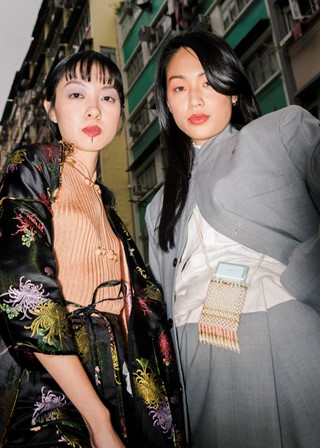
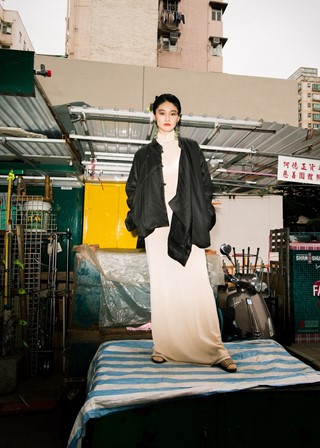
“I think there is new hope though with brands like Yat Pit and designers like Jason and On Ying, who embrace HK culture,” says Lam. “I feel like I have a responsibility to represent Hong Kong and Chinese culture too.”
To be a fashion brand with real cultural clout and legitimacy though, Yat Pit has to find its way into a rap. In walks spit maestro YoungQueenz, founder and creative director of independent hip hop label Wild$tyle – the leading voice of the genre in Hong Kong. “You know in hip hop, rappers usually flex fashion brands right?” says YoungQueenz – a stage name inspired by Nas’ New York City neighbourhood of Queensbridge. “It’s usually about Western brands, but I’m from Hong Kong, so I thought we need our own brand to rap about and Yat Pit fits our vibe. Like we gotta represent our culture.” So YoungQueenz, along with fellow label mates N.O.L.Y and Yung Takeem, dropped the single Yat Pit, a trap track layered with an er-hu loop. The music video was filmed in Yat Pit’s studio in Sham Shui Po.
YoungQueenz’s music captures a weed-fuelled sound, mostly reflected in his deep husky voice. He’s an irreverent character to say the least – a self-proclaimed otaku or Jaak Nam (宅男) in Cantonese, who isn’t shy rapping about masturbation and his ongoing crush with Japanese supermodel Kiko Mizuhara. But at the heart of his songs, like any meaningful hip-hop artist, questions the establishment. That couldn’t be more apparent than in the highly stylised music video Lion, Kirin and Phoenix – a title which is a metaphor for Hong Kong money – where he, N.O.L.Y and Floyd Cheung rip on the city’s capitalistic obsessions and how it will ultimately lead to everyone’s demise. It’s probably that sentiment which led him and his friends to play a prank at Art Basel a few years ago by performing on the perimeters of the event like they were part of it. “People think that Art Basel is art and we were like fuck it, let’s show them real art,” says YoungQueenz. “Everyone who goes to Art Basel is just trying to make themselves look cool like they know art, but they are pretending. It’s just a place of business.”
Hot off his European tour, YoungQueenz has mostly been performing in Shanghai these days and not as much in Hong Kong after XXX Gallery – a subculture club in a warehouse space in Tai Kok Tsui – closed down last year. YoungQueenz used to throw popular monthly hip hop, trap parties there called Dragontown featuring a range of underground artists. “It’s so sad,” says YoungQueenz. “I did it for the culture, and now there isn’t anything like XXX anymore, so I’d rather not host the party at all. When the Umbrella Revolution happened, it made me think, fuck this place; there is no hope and people are sad. Now, I still feel hopeless, but we have to have to get our verses out there.”
Disappointment and discontentment toward city leaders reached a fever pitch in 2014 when protestors, mostly lead by the city’s youth, ignited the Umbrella Revolution. For nearly three months streets in crucial districts and areas surrounding government headquarters were occupied by an encampment of civilians and activists. The conflict was ostensibly about freedom of speech, the right to democratic elections and preserving a level of autonomy from mainland China, but it was also very much about generational tensions.
The city’s young people have been feeling misunderstood and powerless for some time – priced out of real estate as well as undervalued and underpaid in a work culture that demands an average of 60-70 hours a week. It’s a common gripe for many young creatives in major cities across the world, but in Hong Kong, the feeling of despair is compounded when, due to the lack of space, it’s common to be stuck living with your Chinese parents who don’t always value jobs that aren’t in medicine, law and engineering. The Umbrella Revolution was also a plea from young people to the city to reassess what it values and support its own unique culture even when facing an inevitable merge with China.
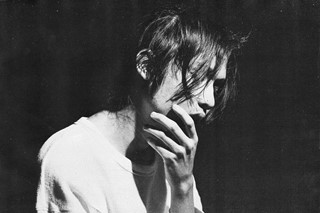
“You can’t deny that the Umbrella Revolution changed the creative scene and how it placed the focus of Hong Kong’s identity more to the forefront,” says Lam. “And as a result it has influenced artists like Fotan Laiki or Merry Lamb Lamb, who I admire because they create a sound that really represents the feeling of young Hongkongers.”
“We’ve been suppressing our emotions for a long time,” says indie-electro musician Merry Fung, who goes by the stage name Merry Lamb Lamb. “When I hear the voices of this generation, it’s a bit sad because there is a sense of hopelessness and resignation that we can’t change the direction of this city. But that hasn’t stopped us from expressing how we feel.” Merry Lamb Lamb embodies Hong Kong’s hybrid of cultures and the internal conflicts that come with it. Having gone abroad to Canada for schooling since she was 15, Lamb Lamb recently returned to the city to pursue her music career after being discovered by her label doub club. “I feel like I’m not really from Canada and I’m not really from Hong Kong. It’s like I’m just in the middle of the sea,” she says. “For the longest time I couldn’t really fit in, and I was bullied in high school, so I created my own utopia through my music and anime-like persona. It’s a safe place where I can say whatever I want and express my anger and sadness to comfort myself and other people.” When you meet Lamb Lamb, it’s like seeing a vibrant, street-chic version of a Yoshitomo Nara character come to life. Her friends say she looks like a lamb, which is how she adopted her stage name.
Though Lamb Lamb’s music is a mixture of anime-inspired synth-pop, electronic and house beats, it is often in contrast to the message in her lyrics, which often tackle themes of solitude, loneliness and her relatable Otaku-lifestyle, which in some ways relates to YoungQueenz. That couldn’t be more true than in her latest single Night Ride, where she sings, “I am like a rogue with a lonely heart that’s trapped. No matter where it is, it’s no longer important. I am a sinner, wandering everywhere without regret. The more I exist, the smaller I become.” The more she exists, the bigger she’s actually getting, garnering attention from brands like Yat Pit, who featured her in their campaign. She also recently competed in a mainland Chinese electronic music talent reality show called Rave Now and this summer she’ll drop her debut English/Cantonese album, Very Merry, which she says is about “feeling lonely and sad and being okay with it”.
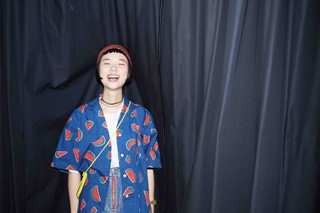
As an introvert, Lamb Lamb spends most of her time at home writing and connecting with friends online. The only time she leaves her home is to go to the studio to mix a new track or watch a live show at This Town Needs with her good friends rapper Dough-Boy and 3D artist/render ghoul Ruby Gloom.
Last year, Gloom created a 360 video featuring an avatar for Lamb Lamb’s music video. “We have so much in common,” says Lamb Lamb. “ A lot of her artwork is about sadness and loneliness, which is why I think I get along with Ruby so well.”
Gloom is probably one of the few – if not the only – digital 3D artists in Hong Kong starting to get attention. After fulfilling an English degree to appease her parents, Gloom found her way to visual arts after a brief stint in fashion. Now, she’s created a company, Bakerie Entertainment, creating avatars and 3D art for clients while running an online presence for her eponymous cyborg avatar, who has taken a life of her own as a social media influencer.
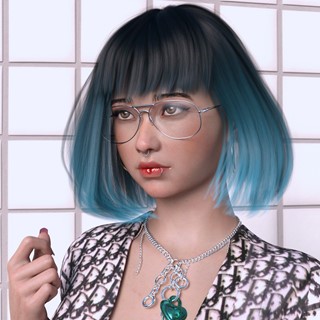
“I was born in the 90s, so I’m really into the Y2K, cyberpunk style. But I’m also really influenced by Japan,” says Gloom. “I feel like Hong Kong has been very influential to cyberpunk culture. A lot of games and movies use HK as that reference, and since it’s where I am from, I thought it would be cool to create a representation of that.”
Gloom’s most recent success was creating an avatar for the Fashion Farm Foundation – an NGO that supports Hong Kong’s local design and fashion scene. For its campaign, Gloom’s work was spread across Causeway Bay on SOGO’s LED billboard, which is the size of five tennis courts. It is prime ad real estate and pretty incredible exposure for Gloom.
With her growing popularity, however, Gloom recognises that her art conjures a bit of an existential crisis. “I wonder how much it would matter if I died?” she ponders. “Because other people can run my avatar and Ruby Gloom can go on existing without me. And it’s something I don’t think people are brave enough to think about these days or comes to terms with. My ultimate dream would be to create an actual Ruby Gloom robot that can live on forever.”
If it’s not thinking of a future where humanity is taken over by AI, Hong Kong’s indie scene is fraught with apprehension. It’s tough living in a big, hyper-dense city. The constant noise, bright lights and the unrelenting pace is exhausting and probably not going to change any time soon. But it’s also in this type of space that inspires more artists to trek forward and make their voices heard, even if it comes from a vulnerable place. As Lamb Lamb sums it up: “It’s a pity party, but that’s what we need.”
